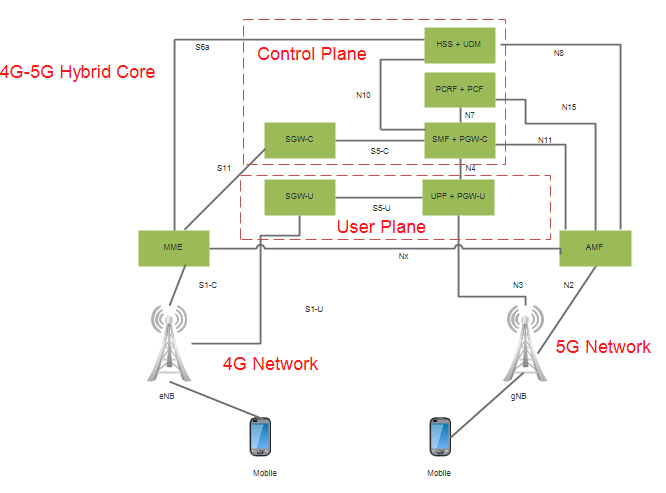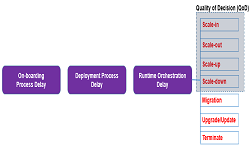Hybrid Core Network – 4G Core to 5 G Core Interconnection
Most of the mobile operators who running 4G network and willing to start with 5G network very soon will be thinking on the strategy to migrate from 4G core to 5G core to meet the investment targets and time to market.
5G will be a “cloud native” design where centralized control and distributed processing is used to scale traffic and transactions efficiently. To make it possible, 3GPP has introduced new architecture where control plane and user plane processing is separated (CUPS Architecture) to 4G core networks under release 14 ahead of 5G. This architecture enables the EPC to meet increasing traffic requirements at low cost per bit and to serve low latency applications hosted in edge locations. This provides an important migration path from 4G core to 5G core. Figure below shows similarities between 4G and 5G core.

While migrating, we can apply the logical mapping between 4G and 5G architectures. the migration objective shall be that how the network can be configured to serve both network types i.e. 4G and 5G networks using external and interfaces in the deployment.
In user plane the 4G gateway S/P-GW and 5G UPF can be converged for subscriber terminal and traffic forwarding. These may be physical servers or virtual machines. In control plane, PGW-C can be combined with the 5G session management function, the PCRF with 5G policy control function and HSS with UDM function. As there is no MME function in 5G, AMF and SMF serve MME functions in 5G core network.

This hybird 4G/5G core is a way for operators to migrate investment in the EPC to the new core network as 5G subscribers and traffic grow. It requires operator to continue to invest in advanced EPC in the near future, with a road map to a full standalone 5G core. This is important because mobile operators with LTE-A , LTE -Pro networks will be launching Gigabit LTE, NB-IoT and other services which demand high capacity and performance.
This model also supports common traffic processing environment on the SGi and N6 interfaces, such that common firewalls, web proxies and so on, can be used in both networks.
Related Posts:
- 5G Reference Network Architecture
- Control and User Plane Separation for Next Generation EPC
- LTE Overview



